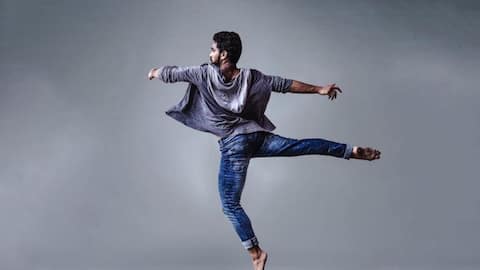How to turn dance from a hobby into a career
What's the story
Transitioning dance from a hobby to a full-time profession requires constant dedication, a deep sense of authenticity, and rigorous training. Insights from dance instructor and choreographer Nikhil Gosavi highlight how these elements are crucial for achieving long-term success in the dance industry. Whether in India or abroad, dance as a career opens numerous opportunities, allowing dancers to create a lasting impact.
What gives it power
Authenticity in dance
Nikhil highlights that being authentic preserves personal style, and the rich cultural heritage of various dance forms and sets dancers apart in a competitive field. In India, authenticity resonates deeply with audiences, forging strong emotional connections and earning respect. On the global stage, authenticity provides a unique perspective that captivates audiences and distinguishes dancers in a market saturated with diverse styles.
What's important
Rigorous training
According to Gosavi, intensive training equips dancers with the technical skills, physical endurance, and artistic versatility needed to excel in a constantly evolving industry. A strong foundation in technique and discipline enables dancers to adapt to new trends while maintaining their artistic vision and preventing injuries. This means dancers can explore various styles and innovate, securing long-term career success despite changing trends.
Transition
Hobby to profession
Gosavi advises aspiring dancers to invest significant time and effort into structured training programs. These programs, whether based on India's traditional Guru-Shishya parampara (Teacher-Disciple method) or contemporary Western approaches, cultivate a versatile skill set and deep cultural understanding. Additionally, aspiring dancers should focus on building a robust network, seek mentors, and regularly perform to gain exposure and experience.
Mistake
Common misconceptions in dance careers
Many aspiring dancers believe that success in dance can be achieved overnight or is solely defined by appearances on reality TV shows or in film projects. Gosavi clarifies that true success in dance requires years of dedication, hard work, and continuous improvement. There are numerous career paths in the dance industry beyond appearing on screen, such as choreography, teaching, and arts administration
Diverse career
Paths for dancers
Beyond performing on stage or screen, dancers have a wide range of career opportunities. Gosavi highlights roles such as choreography, where dancers collaborate with directors and fellow artists to create compelling artistic visions. Teaching allows experienced dancers to guide and inspire the next generation of talent, while arts administration offers roles in event organization, marketing, and advocacy.
Information
Careers in dance therapy and fitness instruction
In the digital age, social media content creation has become a prominent path, enabling dancers to showcase their talent, connect with audiences, and promote physical and emotional well-being while building their personal brand. These diverse paths ensure sustained growth and impact in the dance industry.
